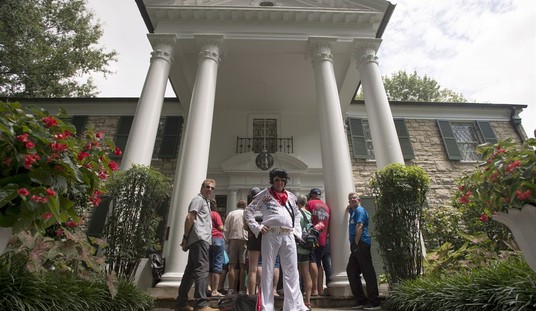In the wake of the bond warning issued by Standard & Poor’s yesterday, some have argued that the controversy helps Barack Obama in demanding adoption of his deficit-reduction plan. However, today’s report by the Washington Post shows that the White House itself disagreed, as it tried to convince S&P to stay silent on American debt. The new information gives ammunition to Republicans (via JWF):
The Obama administration privately urged Standard & Poor’s in recent weeks not to lower its outlook on the United States — a suggestion the ratings agency ignored Monday, two people familiar with the matter said. …
Treasury officials told S&P analysts that they were underestimating the ability of politicians in Washington to fashion a compromise to curb deficits, a Treasury official said. They argued a change in ratings was not needed at this time because the debt was manageable and the administration had a viable plan in the works, the official said.
But S&P analysts told Treasury officials on Friday that they were unmoved — and released a report that expressed skepticism that the political parties could come together on how to bring spending in line with revenue.
Obama’s plan certainly looks like a key component of that skepticism. What does it tell us that Treasury made the argument that the President’s “plan” would solve the problem, and that S&P still issued the warning? It sounds as if S&P doesn’t think much of the plan, nor of the White House’s ability to work with Congress to produce something more realistic.
Jim Pethokoukis at Reuters shows why S&P shouldn’t have been impressed at all with Geithner’s presentation, putting the most damning facts last in a series of points, emphases his:
5) Those savings – 2.4 percent for Obama, 3.5 percent for Ryan — are over ten years vs. cumulative GDP of $196 trillion over 2012-2021 (not counting interest expense). In dollar amounts, that works to savings of $4.7 trillion for Obama and $6.9 trillion for Ryan. So the Ryan Path saves $2.2 trillion more.
6) But that’s not all! The Obama Framework likely uses the same higher growth assumptions as Obama’s February budget. When CBO re-ran that budget using its own gloomier forecast, it found the Obama plan raised $1.7 trillion less than it claimed. Ryan uses the CBO numbers. So a back-of-the-envelope estimate — adjusted for similar economic assumptions — finds the Obama Framework would only save $3 trillion vs. $6.9 trillion for the Ryan Path over ten years. And nearly 2/3 of Obama’s savings comes from higher taxes (net interest).
Also, remember that Obama pledged to save $4 trillion off of his previous budget projections, which raised spending significantly. Ryan takes off the additional spending and starts gaining traction on the structural deficit at the same time. Using vouchers instead of a single-payer system for Medicare, Ryan’s plan controls costs for the government in a much more predictable fashion than Obama’s IPAB-driven ObamaCare plan, which is now under bipartisan assault after his proposal last week.
Obama’s plan relies more on significant and sustained economic growth rather than cuts in spending. Rasmussen’s new consumer-confidence numbers in the wake of the S&P warning puts up a big red flag on those expectations:
Consumer and Investor confidence in the economy has fallen sharply in the wake of Standard and Poor’s announcement that it shifted the U.S. credit outlook from stable to negative. Investor confidence is now at the lowest level since last September.
The Rasmussen Consumer Index, which measures the economic confidence of consumers on a daily basis, has fallen eight points since Monday morning to 74.4. This Wednesday, consumer confidence is down six points from a week ago, down two points from a month ago, and down eleven points from three months ago. It is just a single point above the lowest level of 2011.
The Rasmussen Investor Index fell six points today to a seven month low. At 81.1, the Investor index down nine points since the S&P announcement, down eight points from a week ago and down thirteen points from the beginning of the year. Investor confidence in the economy is now at the lowest level since last September 18.
If consumers retreat from the marketplace again — a distinct possibility before this because of rising prices on gas and food — then the recovery that produces all that tax revenue will never materialize. That’s why deficit reduction that relies on taxes and Pollyanna predictions of economic growth didn’t impress S&P, and won’t impress bondholders in the long run. We need to cut spending, especially on entitlements, and the economy will respond vigorously when we settle our financial disorder accordingly.
Update: I should clarify something here, which is that I don’t think it was illegitimate for Treasury to argue its case to S&P. I don’t think that S&P would have felt “browbeaten” by the White House with Geithner arguing his case. The reason why I think this is newsworthy is for the reasons above — that the Democratic spin that this helps Obama is nonsense, and that S&P doesn’t appear terribly impressed with the White House plan on deficit control.







Join the conversation as a VIP Member